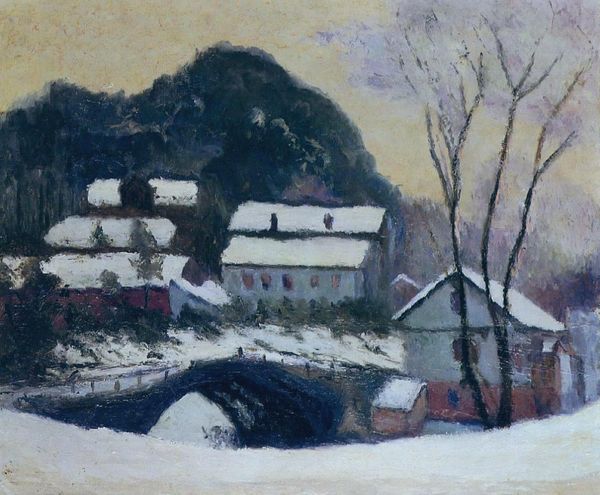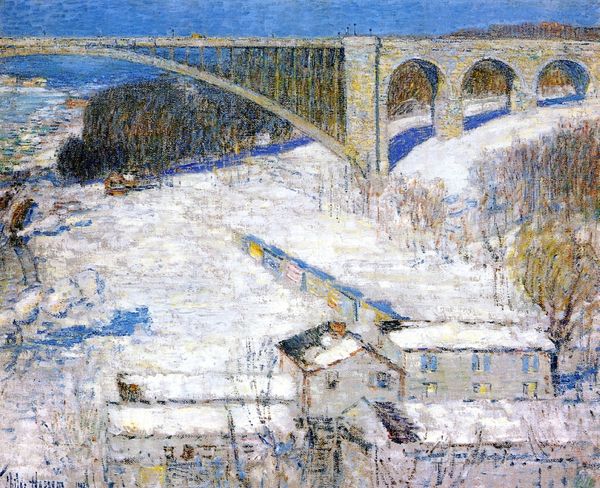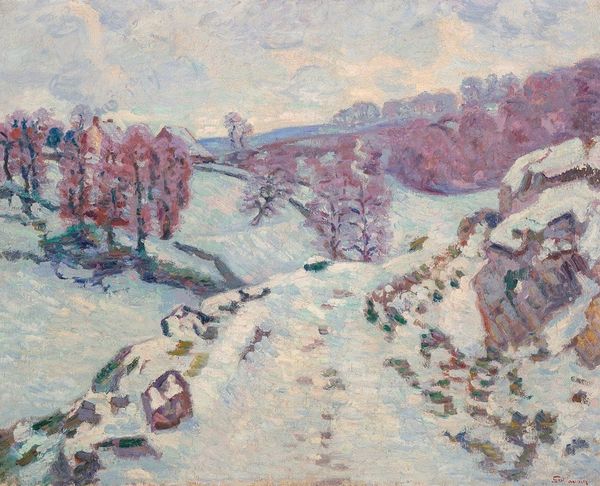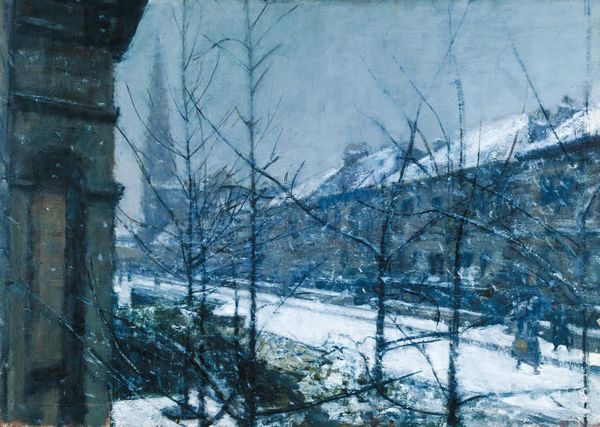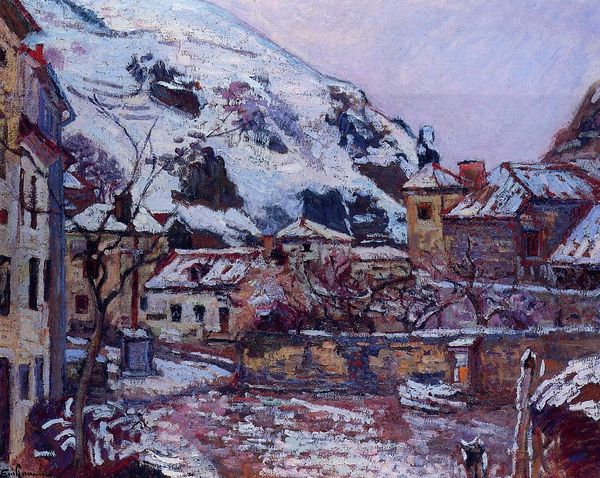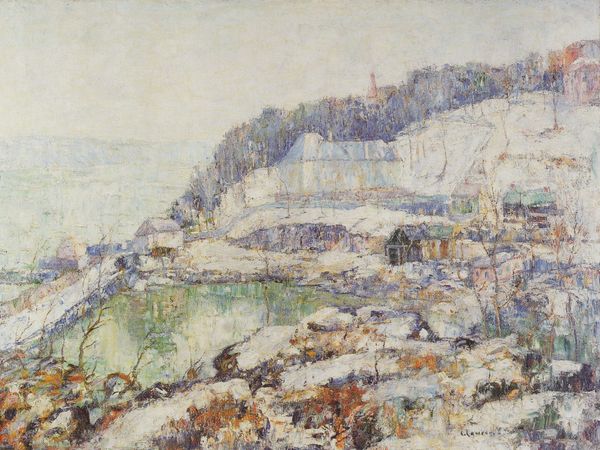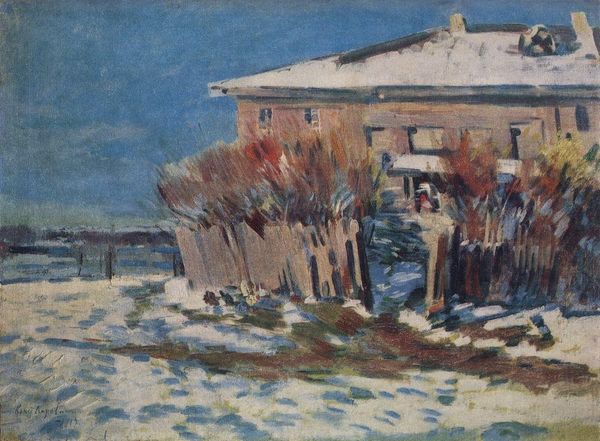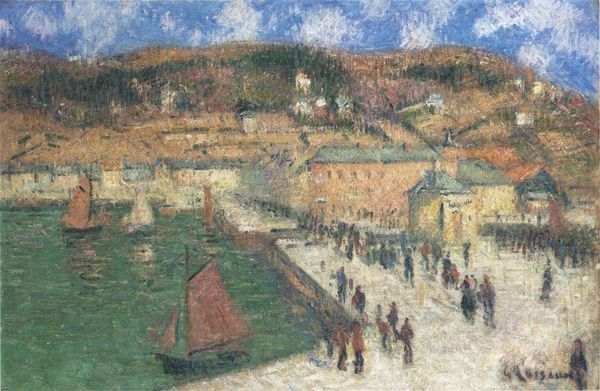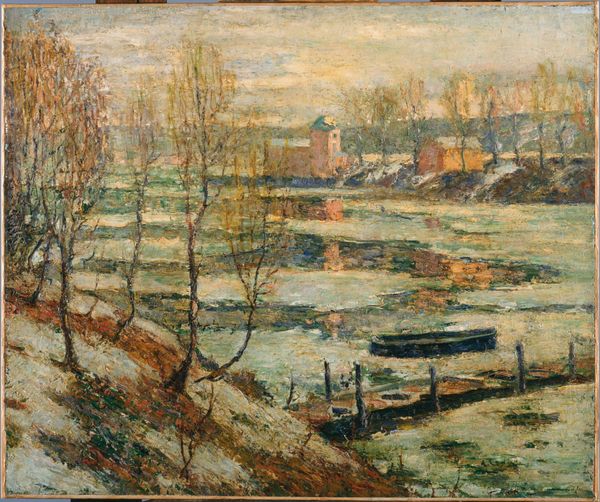
Copyright: Public Domain: Artvee
Editor: This is Monet’s “Sandvika, Norway,” painted in 1895. It's an oil painting, and it feels so…muted. Almost monochromatic, dominated by cool blues and whites. The scene is snowy and quite hazy. What's your take on it? Curator: What strikes me immediately is the materiality. Look at how Monet uses oil paint not just to depict snow, but to *become* snow. The textured brushstrokes, the visible layers - they evoke the physical experience of being in that landscape. Think about the production of paint itself: the pigments, the linseed oil, the labor involved in creating and distributing these materials. Editor: So, you're focusing less on the "what" – the snowy landscape – and more on the "how" – the physical properties of the paint itself and the artist's technique? Curator: Exactly! The blurring of lines between representation and material reality is key. The industrial revolution had transformed not only artistic techniques, but also material availability for the art world. I wonder how those processes are informing his vision. Can you tell from looking whether this was a prepared canvas, or even the grade of canvas available to artists at the time? Editor: That's not something I usually consider. I guess I typically think about art as a representation, not the product of specific industrial processes. Curator: Monet, painting *en plein air*, directly engages with these environmental elements, but consider also the environmental cost of creating all of this color. Where did that pigment come from? Who mined it? Editor: I never really thought about the social and economic context behind a landscape painting like this before. Curator: It changes how you see the painting, doesn't it?
Comments
No comments
Be the first to comment and join the conversation on the ultimate creative platform.
